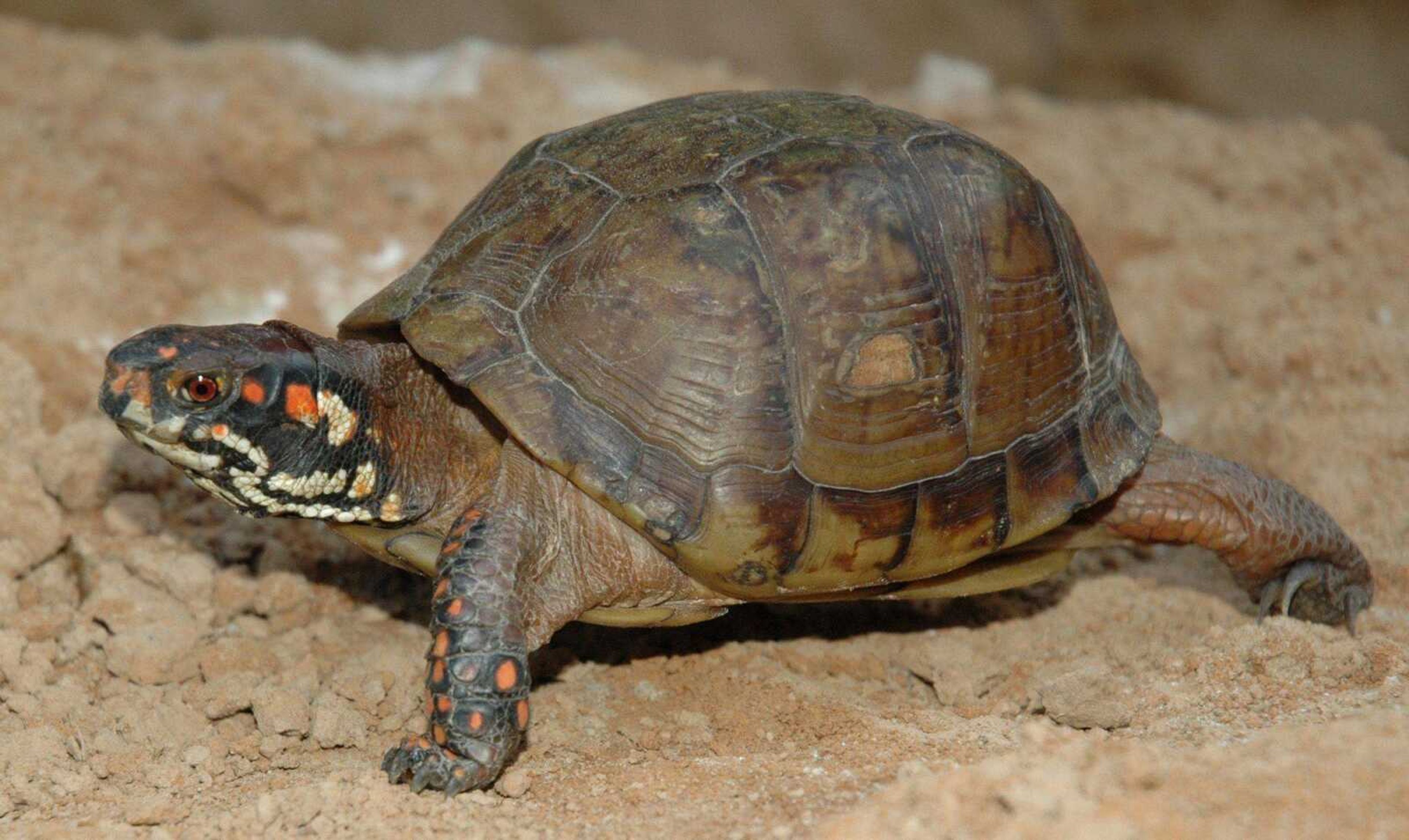Missouri's official reptile is the three-toed box turtle. This slow turtle is so named because it has three toes on each back foot. It is a subspecies of the box turtle family, and although not a true tortoise, the box turtle is sometimes called a tortoise.
Wild box turtles forage on land for food, eating such things as earthworms, snails and slugs, strawberries, crickets and a host of low-growing plants.
In hot, dry weather the three-toed box turtle will spend most of the day wedged under a fallen log or similar place where there is shade and moist soil. Box turtles have the ability to hide inside their shells, pulling legs, neck and head completely inside. As the weather gets cold, a wild box turtle will scratch out a shallow hole, usually under a log or rock where it will hibernate for the winter.
Box turtles, although widely sold, do not make good pets. They often suffer from dehydration and disease caused by improper care. These animals do best when left to fend for themselves in the wild. Adult three-toed box turtles will establish a home territory, where they are familiar with their surroundings and feel safe.
Box turtles -- including three-toed box turtles -- do not recover well from stress conditions. For this reason box turtles do not make good candidates for use in turtle races. Well-intentioned individuals who entertain themselves and children by racing a box turtle often unwittingly fail to return the wonderful little guy back into his home territory. This compounds the box turtle's stress and more often than not will lead to its death.
Other dangerous encounters faced by box turtles include natural predation from most fur-bearing animals like raccoons, foxes, skunks. This predation usually occurs when the turtles are young. Adult box turtles sometimes get trapped inside railroad tracks, sometimes perish as road kill and sometimes die from pesticide poisoning by eating insects after farmers or gardeners spray their fields and gardens.
Through the Woods is a weekly nature photo column by Aaron Horrell. Find this column at semissourian.com to order a reprint of the photo. Find more work by him at the O'Tenem Gallery.
Connect with the Southeast Missourian Newsroom:
For corrections to this story or other insights for the editor, click here. To submit a letter to the editor, click here. To learn about the Southeast Missourian’s AI Policy, click here.










